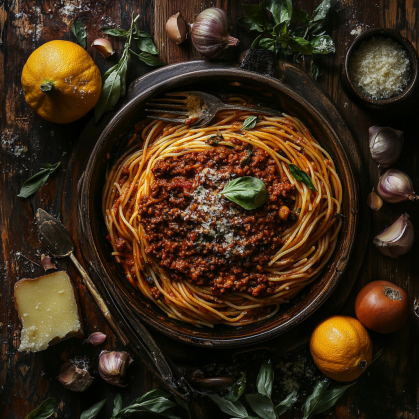Spaghetti Bolognese is a timeless classic that brings the flavors of Italy straight to your kitchen. This hearty dish, with its rich meat sauce and perfectly cooked pasta, has become a favorite worldwide. Originating from Bologna, Italy, it combines simple ingredients with slow-cooking techniques to create something truly special. In this Post, you’ll learn how to craft an authentic Spaghetti Bolognese that’s full of bold flavors and satisfying textures.
Whether you’re new to cooking or a seasoned chef, mastering this dish will elevate your pasta nights to a whole new level. Let’s dive into the delicious tradition of Spaghetti Bolognese!
The History and Tradition of Spaghetti Bolognese
The Origins in Bologna
The Authentic Spaghetti Bolognese traces its roots to Bologna, a historic city in northern Italy. The dish evolved from “ragù alla bolognese,” a slow-cooked meat sauce traditionally served with tagliatelle, not spaghetti. Ragù originated in the late 18th century and was often reserved for special occasions due to its rich ingredients.
While the original recipe featured a blend of beef, pork, and pancetta, it also included milk or cream for a velvety texture. Over time, variations emerged as the dish traveled beyond Italy, adapting to local tastes and ingredients.
Despite its global popularity, many Italians argue that Spaghetti Bolognese is not authentically Italian, as spaghetti is rarely paired with ragù in Bologna. However, the dish remains a beloved classic worldwide, celebrated for its deep flavors and comforting appeal. Its origins in Bologna continue to inspire cooks to recreate its traditional essence.
Traditional vs. Modern Variations
Traditional Bolognese sauce, known as “ragù alla bolognese,” follows a specific recipe deeply rooted in Italian culinary tradition. It uses a combination of ground beef, pork, and pancetta, slowly simmered with onions, carrots, celery, tomatoes, and sometimes milk or cream. The sauce is served over tagliatelle or incorporated into lasagna, as spaghetti is rarely paired with ragù in Italy.
Modern variations, however, have adapted to suit diverse palates and lifestyles. Many recipes swap tagliatelle for spaghetti, making it more accessible globally. Some include garlic, red wine, or herbs like basil, which are not typically found in the traditional version.
Contemporary takes also offer dietary alternatives, such as using plant-based proteins or gluten-free pasta. These adaptations allow more people to enjoy the dish while maintaining its essence. Both versions showcase the versatility and timeless appeal of this iconic sauce.
Why It’s a Global Favorite
The Authentic Spaghetti Bolognese has earned its place as a global favorite because of its universal appeal and comforting flavors. The combination of a rich, meaty sauce with perfectly cooked pasta creates a dish that is both satisfying and easy to enjoy. Its balance of savory, tangy, and creamy elements suits a wide variety of palates, making it a household staple in many countries.
The dish’s adaptability also contributes to its popularity. Whether prepared with traditional ingredients or tailored to accommodate dietary preferences, it can be adjusted to fit different cultures and lifestyles.
Additionally, Spaghetti Bolognese is easy to prepare, making it accessible to home cooks of all skill levels. Its comforting, hearty nature makes it ideal for family dinners, celebrations, and casual meals alike. With its simplicity and depth of flavor, it continues to unite food lovers across the world.
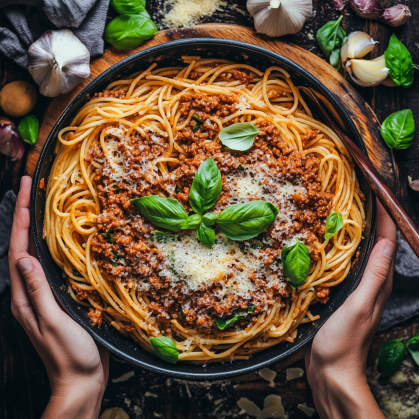
Essential Ingredients for Authentic Spaghetti Bolognese
Core Ingredients
The magic of Spaghetti Bolognese lies in its core ingredients, each playing a vital role in creating the dish’s rich, hearty flavor. Ground beef is the star of the sauce, offering a robust, savory base. Pancetta adds a touch of smokiness and depth, complementing the beef beautifully.
A medley of finely chopped vegetables—onions, carrots, and celery—forms the soffritto, an essential flavor foundation in Italian cooking. These vegetables are sautéed to release their sweetness, balancing the sauce.
Tomatoes, whether fresh, canned, or in paste form, provide acidity and richness, tying the flavors together. Olive oil is used to cook the ingredients, while a splash of red wine enhances the sauce with a touch of complexity.
Finally, bay leaves and Parmesan cheese add aromatic and nutty notes, elevating the dish to perfection. Together, these ingredients create the comforting and Authentic Spaghetti Bolognese.
Flavor Enhancers
Flavor enhancers are the secret to taking Spaghetti Bolognese from good to unforgettable. Beef or vegetable stock are classic addition, bringing depth and richness to the sauce. It balances the acidity of the tomatoes while adding a subtle complexity.
Tomato paste is another essential enhancer, intensifying the tomato flavor and giving the sauce a thicker, richer texture. A dash of balsamic vinegar or Worcestershire sauce can add a hint of sweetness and tanginess, enhancing the overall balance of flavors.
Freshly grated Parmesan cheese is both a seasoning and a garnish, offering a nutty, salty element that ties everything together. Finally, a sprinkle of fresh herbs, like parsley or basil, brightens the dish with a burst of freshness, ensuring every bite is layered with bold, satisfying flavors.
Ingredient Substitutions
The Authentic Spaghetti Bolognese is a versatile dish that can easily accommodate ingredient substitutions without compromising its deliciousness. For a vegetarian version, swap ground beef and pancetta with plant-based ground meat or lentils. These alternatives provide a hearty texture while keeping the dish meat-free.
If you’re avoiding dairy, replace milk or cream with unsweetened almond milk or oat cream. These options maintain the sauce’s creaminess while catering to dietary restrictions. For gluten-free eaters, choose gluten-free pasta or zucchini noodles as a substitute for traditional spaghetti. Coconut aminos or soy sauce can substitute Worcestershire sauce for a vegan twist.
These substitutions allow you to customize Spaghetti Bolognese for different dietary needs while preserving the comforting and satisfying essence of this beloved dish.
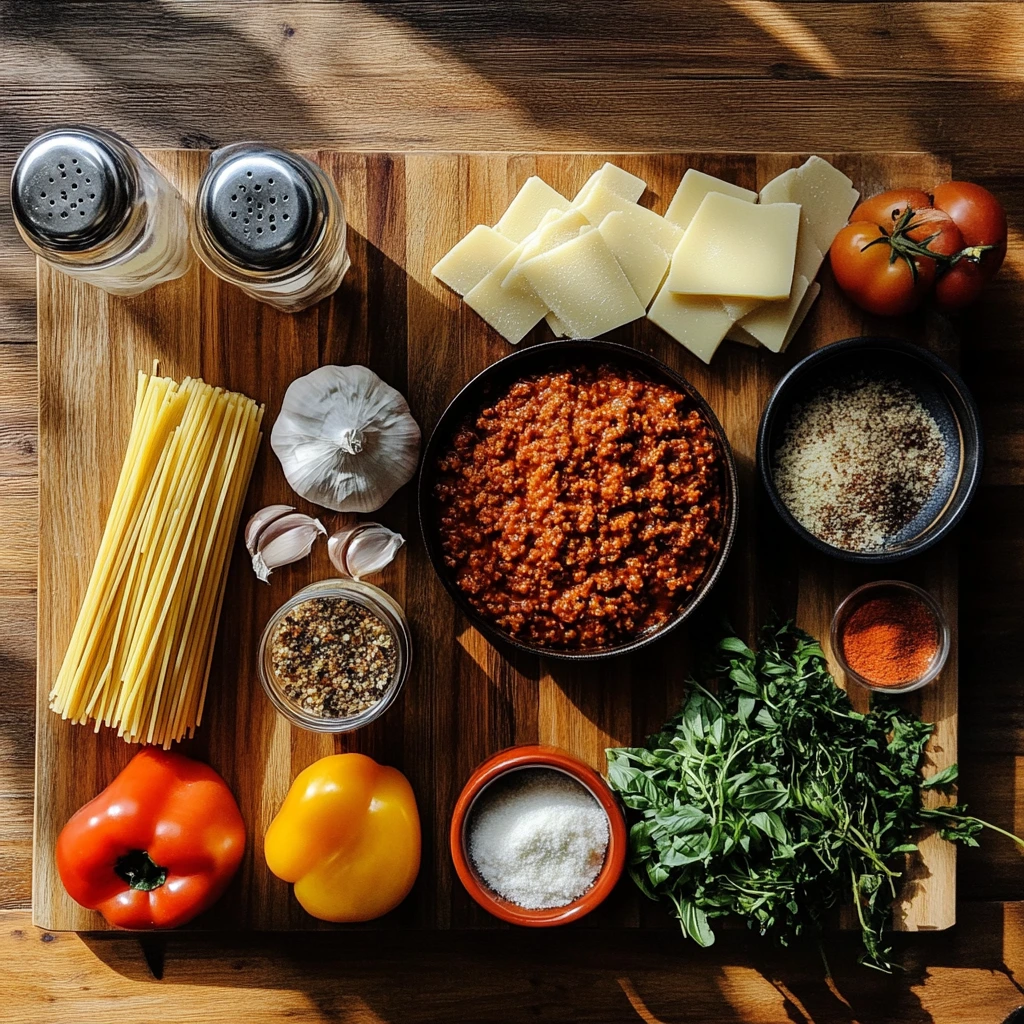
Step-by-Step Guide to Making the Perfect Bolognese Sauce
Preparing the Ingredients
Start by dicing the onion, carrot, and celery into small, uniform pieces. This helps the vegetables cook evenly and integrate into the sauce. Finely chop the pancetta, making sure it’s small enough to render its fat but large enough to add texture. For the ground beef, break it up into smaller chunks before cooking to ensure it browns properly.
Mince the garlic just before adding it to avoid burning during cooking. Measure out your wine, tomato paste, and bay leaves so they’re ready when needed.
Don’t forget to season early! Salt the vegetables as you sauté them to bring out their natural sweetness.
Prepare your pasta water by filling a large pot with water, adding a generous pinch of salt, and bringing it to a boil before starting the sauce. This saves time and ensures your pasta cooks perfectly.
Cooking the Sauce
Heat a large, heavy-bottomed pot over medium heat. Add the pancetta and cook it until it becomes crispy and releases its fat. Remove the pancetta, then add the diced onion, carrot, and celery. Sauté them until soft and golden, about 8 minutes. Add the minced garlic and cook for another minute, being careful not to burn it.
Next, brown the ground beef in the same pot, breaking it up as it cooks. Let it cook until the meat is fully browned. This step builds flavor.
Pour in the tomato paste and stir it in to create a rich base. Add the bay leaves and crushed tomatoes. Stir everything together, bring to a simmer, and reduce the heat. Let the sauce cook slowly for 1.5–2 hours, stirring occasionally.
Cooking the Pasta
Bring a large pot of salted water to a rolling boil. Use plenty of water to give the pasta room to cook evenly. Once the water is boiling, add the spaghetti. Stir occasionally to prevent the noodles from sticking together.
Follow the package instructions for cooking time, but start checking the pasta a minute before the suggested time. It should be firm to the bite, or “al dente.”
Reserve a cup of pasta water before draining the noodles. The starchy water helps bind the sauce to the pasta. Drain the spaghetti and immediately add it to the simmering Bolognese sauce. Toss everything together, allowing the sauce to coat the pasta evenly.
If needed, add a little pasta water to adjust the sauce’s consistency. Let the pasta absorb the sauce for 2–3 minutes before serving for the best flavor integration.
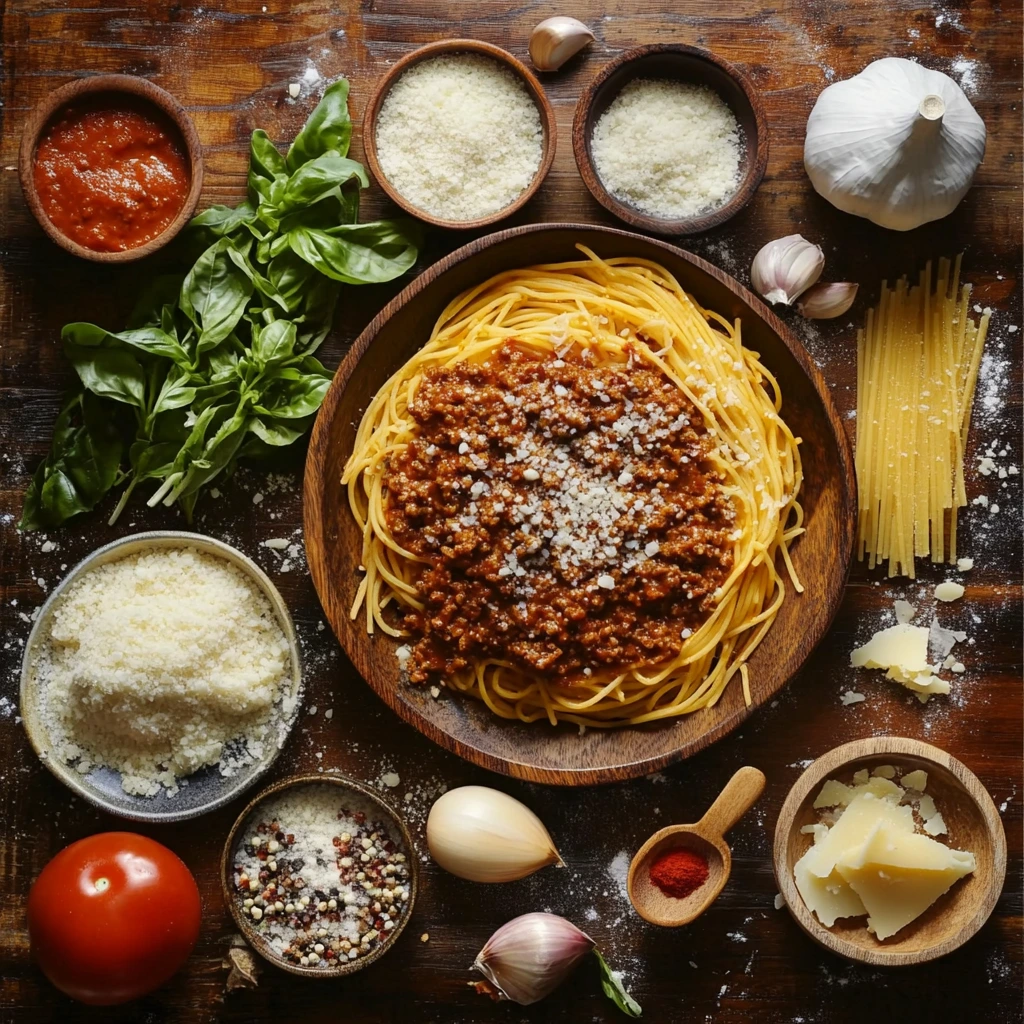
Tips and Tricks for Elevating Your Spaghetti Bolognese
Layering Flavors
Start by sautéing the vegetables in the pancetta fat, allowing them to caramelize and develop sweetness. This first step adds depth to the sauce. Stir the garlic in for just a minute to release its fragrance, but don’t let it burn.
When browning the meat, let it cook until it’s deeply caramelized. This step adds a rich, savory flavor. As the meat cooks, stir occasionally to ensure even browning.
Deglaze the pan with wine, scraping up any browned bits from the bottom. These bits, known as fond, contain intense flavor that will enrich the sauce.
After adding the tomato paste, cook it briefly to deepen its flavor before adding the tomatoes. Slow simmering the sauce allows all the flavors to meld together. Be patient; the longer the sauce simmers, the richer the taste.
Achieving Perfect Texture
The key to perfect texture lies in balancing the meat, sauce, and pasta. Start by ensuring the ground beef is browned properly; this adds a rich, meaty texture to the sauce. Avoid overcrowding the pan when cooking the meat, as it can steam instead of browning.
For the sauce, let it simmer slowly to allow the flavors to meld and thicken. If it becomes too thick, add some reserved pasta water to loosen it.
The pasta should be cooked al dente—firm but not hard. This texture helps it hold up against the sauce without becoming mushy.
When combining the pasta and sauce, toss them gently, ensuring the sauce coats every strand. Allow the pasta to absorb some of the sauce for 2–3 minutes. This gives the dish a cohesive texture, where sauce and pasta blend seamlessly.
Serving Suggestions
To serve your Authentic Spaghetti Bolognese, start by placing a generous portion of pasta onto each plate. Use tongs or a pasta fork to ensure the noodles are evenly distributed. Spoon the Bolognese sauce generously over the top.
For extra flavor, sprinkle freshly grated Parmesan cheese over the dish. The rich, nutty cheese complements the savory sauce perfectly.
Garnish with freshly chopped basil or parsley to add color and a burst of freshness. This adds a nice contrast to the rich, hearty flavors of the sauce.
For an elevated touch, drizzle a small amount of high-quality olive oil over the top. It enhances the flavor and gives the dish a beautiful sheen. Pair with a crisp green salad and crusty bread for a complete, satisfying meal.
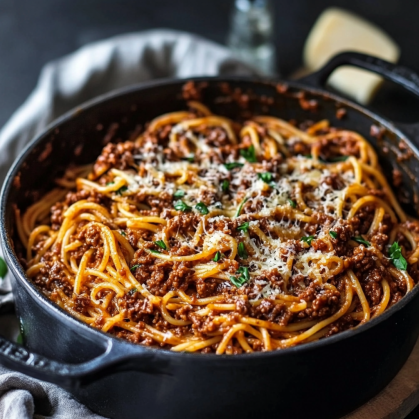
Storing and Reheating Spaghetti Bolognese
Refrigerating Leftovers
After enjoying your Authentic Spaghetti Bolognese, let the leftovers cool to room temperature before storing them. This prevents condensation and keeps the sauce from becoming watery. Transfer the sauce and pasta into airtight containers to maintain freshness.
For the best flavor and texture, store the pasta and sauce separately. This keeps the noodles from becoming soggy. If combined, the sauce will help keep the pasta moist during storage.
Refrigerate your leftovers within two hours of cooking to ensure food safety. The Bolognese sauce can be kept in the fridge for up to three days.
When reheating, gently warm the sauce on the stove, stirring occasionally. If needed, add a splash of water or wine to restore its consistency. Avoid microwaving for long periods to preserve the flavors and prevent overcooking the dish.
Freezing for Future Meals
Freezing Spaghetti Bolognese is a great way to preserve it for future meals. Start by letting the sauce cool completely before freezing. This helps prevent ice crystals from forming, which can affect the texture.
Divide the sauce into smaller portions, using freezer bags or airtight containers. This makes it easier to reheat only what you need. If using freezer bags, squeeze out as much air as possible to prevent freezer burn.
For best results, freeze the sauce and pasta separately. The pasta can become mushy when frozen and reheated with the sauce.
Label each container with the date to keep track of its freshness. Bolognese can be stored in the freezer for up to three months.
When ready to eat, thaw the sauce overnight in the fridge, or reheat it directly from frozen. Just add a little pasta water to restore its consistency.
Reheating Tips
Reheating Spaghetti Bolognese requires a gentle approach to preserve its flavor and texture. If the sauce is refrigerated, let it sit at room temperature for 15–20 minutes before reheating. This ensures even warming.
To reheat on the stovetop, place the sauce in a pan over low heat. Stir occasionally to prevent it from sticking or burning. Add a splash of pasta water, broth, or wine to adjust the consistency if needed.
If you’re reheating frozen Bolognese, thaw it in the fridge overnight. For quicker reheating, thaw it in the microwave or over low heat on the stovetop.
Avoid microwaving the sauce for too long, as it can dry it out. If reheating the pasta, do so separately in boiling water for 1–2 minutes to restore its texture before mixing with the sauce.
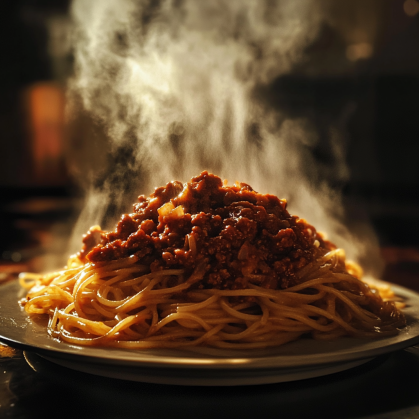
Conclusion
Now that you know how to make authentic Spaghetti Bolognese like a pro, it’s time to try it yourself! The rich, hearty flavors of this classic Italian dish are sure to impress anyone at your table. Whether you’re enjoying it on a quiet evening or serving it for a family meal, mastering this recipe is an essential skill for pasta lovers.
Don’t be afraid to make it your own by experimenting with ingredients or cooking techniques. Share your results with friends and family, and celebrate the tradition of Spaghetti Bolognese!
For more information about Spaghetti Bolognese, check out this detailed guide on its origins and variations.

